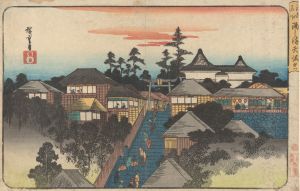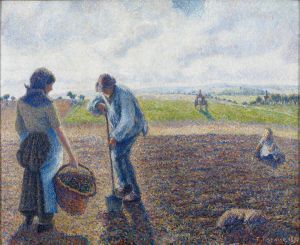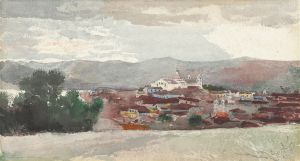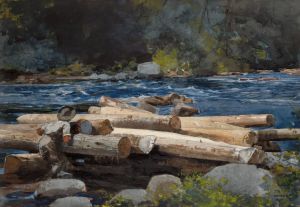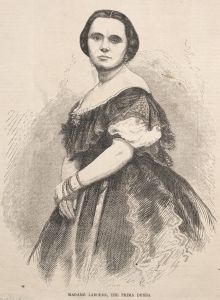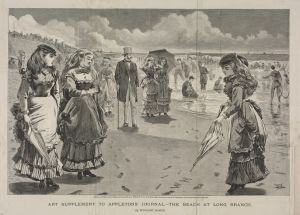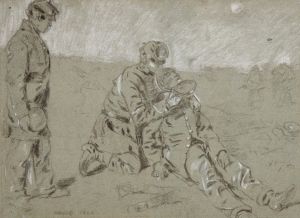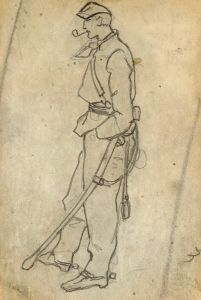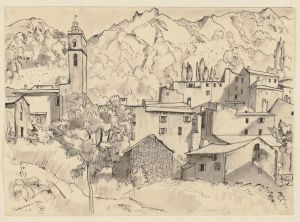
Hudson River, Logging
A hand-painted replica of Winslow Homer’s masterpiece Hudson River, Logging, meticulously crafted by professional artists to capture the true essence of the original. Each piece is created with museum-quality canvas and rare mineral pigments, carefully painted by experienced artists with delicate brushstrokes and rich, layered colors to perfectly recreate the texture of the original artwork. Unlike machine-printed reproductions, this hand-painted version brings the painting to life, infused with the artist’s emotions and skill in every stroke. Whether for personal collection or home decoration, it instantly elevates the artistic atmosphere of any space.
Winslow Homer, an American landscape painter and printmaker, is renowned for his depictions of the American wilderness and maritime scenes. One of his notable works is "Hudson River, Logging," which captures the essence of 19th-century American life and the natural environment. This painting is a testament to Homer's skill in portraying the interplay between humans and nature, a recurring theme in his oeuvre.
"Logging on the Hudson" was created during a period when Homer was deeply engaged with the American landscape, often focusing on the rugged and untamed aspects of nature. The Hudson River, a significant geographical feature in New York State, was a vital artery for commerce and industry during the 19th century. Logging was a common activity along the river, as the timber industry was crucial for the economic development of the region. Homer's painting reflects this historical context, capturing the labor-intensive process of transporting logs down the river.
In the painting, Homer employs his characteristic realism to depict the scene with meticulous attention to detail. The composition likely features loggers working diligently, maneuvering logs through the water. The use of light and shadow, a hallmark of Homer's style, adds depth and dynamism to the scene, highlighting the physical exertion of the workers and the natural beauty of the river landscape. The painting's palette, often subdued yet rich, would typically reflect the earthy tones of the logs and the surrounding environment, emphasizing the harmony between human activity and nature.
Homer's work is often celebrated for its narrative quality, and "Hudson River, Logging" is no exception. Through his brushstrokes, he conveys a story of human endeavor and the challenges faced by those who worked in the logging industry. The painting serves as a historical document, offering insights into the lives of 19th-century loggers and the significance of the Hudson River as a conduit for economic activity.
Winslow Homer was known for his ability to capture the American spirit, and his works often resonate with themes of resilience and the sublime beauty of nature. "Hudson River, Logging" fits within this broader context, illustrating the intersection of human labor and the natural world. While the painting itself is a specific depiction of a moment in time, it also speaks to broader themes of industrialization and the transformation of the American landscape during Homer's era.
Homer's legacy as one of America's foremost artists is partly due to his ability to encapsulate the essence of American life and landscapes. His paintings, including "Hudson River, Logging," continue to be studied and admired for their technical mastery and their ability to evoke the spirit of a bygone era. Through his art, Homer offers a window into the past, allowing contemporary audiences to appreciate the historical and cultural significance of the scenes he so vividly portrayed.





